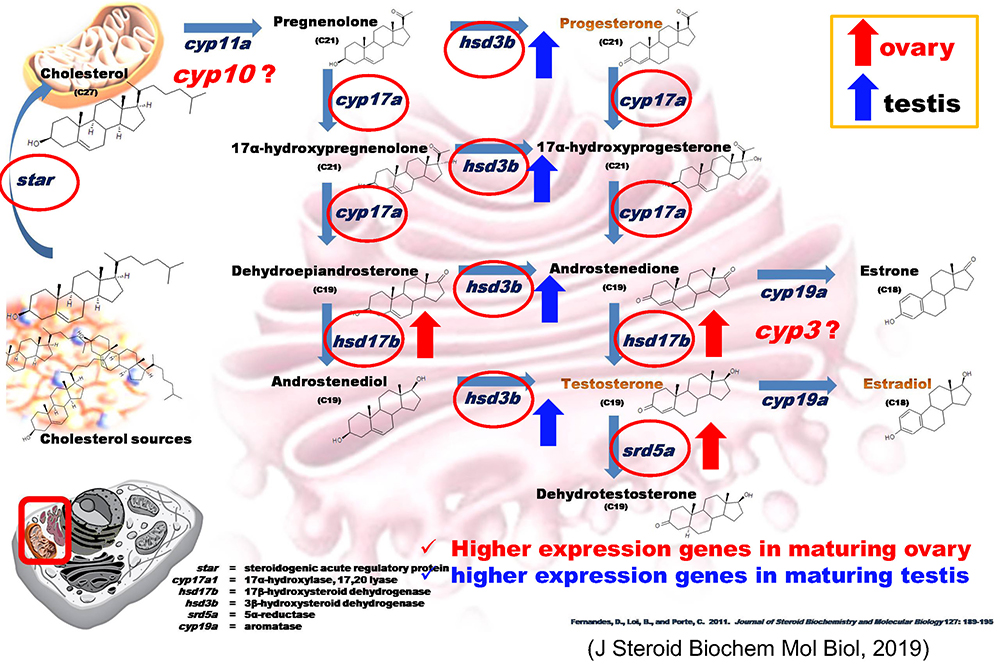| Name | makoto.osada |
|---|---|
| Research Interest | Aquaculture Biology |
| Research Projects | |
|
The goal of my research is to elucidate the endocrine mechanisms that control sexual differentiation and gametogenesis in bivalve mollusks (scallops, oysters, etc.) at the molecular level, and to develop techniques for manipulating these mechanisms to control sexuality and artificial maturation. Scallops have reddish-orange ovaries and milky-white testes and can be easily identified by the naked eye at maturity.
1.Sex Differentiation and Gametogenesis by myGnRH In the central nervous system of the scallop, we have found the gene for the precursor protein of gonadotropin-releasing hormone (myGnRH), which has the same origin as humans. Two peptides, myGnRH12aa peptide (12 amino acid residues with a C-terminal glycine terminus) and myGnRH11aa peptide (11 amino acid residues with a C-terminal proline amide terminus), have been synthesized from the gene. myGnRH11aa peptide has been found to induce testicular development by spermatogonial cell proliferation and female masculinization. To further elucidate the mechanism of feminization, we are investigating the function of myGnRH12aa by using sex-specific genes.  | |
|
2.Signaling of myGnRH The receptor and intracellular signaling for myGnRH11aa in scallops have been elucidated. To clarify the control by GnRH peptide in the regulation of sexual differentiation and gametogenesis, we are exploring its receptor mechanism to determine it as an interaction with another peptide myGnRH12aa. | |
|
3.Steroid hormone biosynthesis and its regulation Estrogen-like substances regulate reproduction in bivalves as in vertebrates, and myGnRH11aa in scallops promotes spermatogonial proliferation via estrogen. In scallops, Mediterranean mussels, and blue mussels, we have found estrogen receptor (ER) genes with quite different ligand-binding regions that transmit the signal of this estrogen-like substance into the cells. In scallops, the biosynthesis-related genes that constitute the biosynthetic pathway of estrogen-like substances were presented for the first time in bivalves. We are now conducting further studies on the structure determination of estrogen-like substances and their biosynthetic regulation by GnRH.  | |




